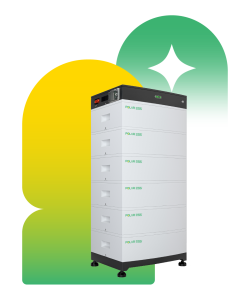Designing a battery energy storage system (BESS) requires more than simply choosing a few components—it involves a well-planned strategy that balances energy needs, safety, budget, and long-term efficiency. As part of the clean energy transition, commercial businesses are increasingly relying on customized BESS to stabilize energy supply, reduce electricity bills, and support renewable generation. At POLAR ESS, we provide comprehensive insights and solutions for building a system that delivers both performance and reliability.
Table of Contents
ToggleUnderstanding the Key Elements in a Battery Energy Storage System
Before answering the question how to design battery energy storage system, we need to break down the essential components and their roles. A well-designed system typically consists of lithium-ion batteries, a battery management system (BMS), an inverter, and an energy management system (EMS). Each component plays a crucial part in ensuring the safety, efficiency, and controllability of the stored energy.
When we help our customers design a commercial BESS, we start by analyzing load profiles and energy consumption patterns. For example, if a retail store wants to offset peak electricity costs, we configure the system to discharge stored power during those hours. Our solar-compatible inverters ensure seamless integration with rooftop PV systems, while our modular battery packs allow flexibility in scaling.
Sizing, Location, and Cooling: Factors That Matter
One of the most frequently asked questions is how to design battery energy storage system for buildings with space or thermal limitations. System sizing should always reflect the site’s peak demand, daily usage cycles, and future energy needs. Oversizing can lead to unnecessary costs, while undersizing may limit system effectiveness.
We also pay close attention to the installation environment. For indoor setups, our BESS solutions use compact cabinets with advanced heat dissipation systems, reducing the need for expensive HVAC upgrades. For outdoor installations, we offer IP-rated enclosures that ensure protection against water, dust, and temperature fluctuations.
Battery temperature management is another critical factor, especially for lithium-based cells. Our systems integrate thermal sensors and cooling fans that maintain optimal operating conditions, extending battery life and improving overall safety.
How We Support Your Energy Goals
At POLAR ESS, we believe in co-designing each solution with our partners. Our team conducts site assessments, load forecasting, and simulations before recommending any hardware. With our in-house R&D and production teams, we offer end-to-end support—from concept to installation.
Our SME Commercial ESS products are especially popular among commercial buildings, schools, and small factories. These systems support multi-level control strategies, time-of-use optimization, and can operate in both on-grid and off-grid modes. Combined with our smart EMS, users can monitor system status in real time via mobile apps or dashboards..
Conclusion
Learning how to design battery energy storage system is not just a technical question—it’s a step toward greater energy independence and sustainability. By understanding your energy profile and selecting the right configuration, you can maximize ROI and improve power reliability.


